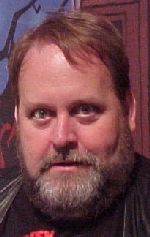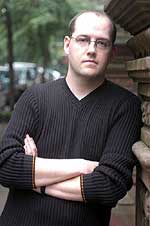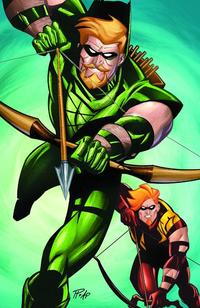Comics /
Cult Favorite
Bob Schreck, Part 1: Perfect Pitch
By Philip Schweier
May 27, 2006 - 21:38
Today, breaking into comics as a writer is harder than ever. Most comic book publishers no longer have an open-submissions policy. The industry has instead relied on writers who have established themselves in another field, such as writer/director Joss Whedon. Known for creating popular TV shows such as Buffy the Vampire Slayer, Whedon is the current writer on Marvel’s Astonishing X-Men.
However, writing for comics is a different format than many writers are used to, and newbies to the field are expected to know what is required of them. Kevin Smith, another filmmaker who has cultivated a second career in comics, was required to prove himself to DC editor Bob Schreck. “He'd never really written comics,” says Schreck. “I said, ‘Kevin, I need ten pages. I need to see you know how to break it down.’ And he did that, without a whimper.”
Following Smith’s 15-issue run, Schreck required a strong follow-up. “I needed mystery meat,” he explains. “I needed somebody who had this weird street cred that nobody knew in comics.” He found it in best-selling novelist Brad Melzter, who also happened to be a pal of comic book writer Judd Winick’s.
Winick and Meltzer had attended college together, a fact which Schreck had overlooked. He was also unaware of Meltzer’s passion for comics, nor that Green Arrow was one of his favorite characters of all time. “I just knew him as a pal of Judd's and I met him once, that's all. I meet pals all the time. I didn't know they were that tight.”
Eventually, Schreck picked up one of Melzter’s novels. “I read the book in one night, and thought, ‘Hey, this guy's good. He understands characterization. He understands story arcs. He understands how to construct a story. This is good, and it's a MYSTERY.’ I called Judd and asked, ‘Do you think if I called up Brad he'd be interested?’ and Judd was like, ‘Oh, brother, you're out of your mind.’ And boom, it worked.”
As enthusiastic as Meltzer may have been, he approached the project with the ambitions of a professional storyteller, rather than a simple villain du jour. He set about to do a true story arc by the end of which Green Arrow would have grown as a character. In an interview with newsarama.com, he said, “I told him (Schreck) that if I didn't have a great idea for it, we shouldn't do it together – we'll do another book sometime.”
While establishing oneself in another venue adds weight to one’s credentials, there is no denying there is a great deal of undiscovered talent. Aspiring comics creators are toiling away with story ideas and promoting themselves to get their work in front of comic book editors with varying degrees of success.
“If you sit in a room and type all day and never get anyone to draw it, and think that you're the world's greatest writer, you may very well may be, but no one will ever know,” Schreck told a group of students at the Savannah College of Art & Design
Schreck suggests that one’s ability to tell stories in a comic book format should be clearly demonstrated by putting together mini-comics using copy machines. “There's this wonderful place called Kinko's, and you don't have to be the greatest artist if you have a good mind and can get the most rudimentary artist to draw your story. If you're doing what's right, an editor can look at it and say, ‘Well, the art's not great, but that's an interesting thing that he did here visually, making the artist draw this.’ And then you paper the world with your Kinko's submission.”
He recommends such “ashcans” – as they are known in the comics business – be sent to potentially interested editors on a regular basis. “I say every three or four months. But be like clockwork, don't let it languish to six months... and it's not the same pages.”
Personally, Schreck says most of his reading is done after
Conan O’Brian. “I'm calm and I'm not thinking of the office anymore and I'm ready to read. I'm ready for something new, and the last thing I want is a thick, juicy script. Just give me 20 pages, or ten; I'm in and out the door in under five minutes. Boom. Now I can see that you know the form, you understand how to write.”
Part of the challenge is being creative enough to capture their attention quickly and effectively. Artists have the advantage of conveying their degree of ability moments after an editor opens their portfolio. “It's just easier,” Schreck points out. “You look at it and go, ‘Wow, you're great. Let's go.’ “
Writers require an investment of time, so it helps to dream up an inventive way of getting an editor’s attention. “I get 'em every day. It's more paper with a paper clip. Sorry, but it goes in a pile,” says Schreck wearily. “But instead I get this box. Oooh. What's this? It's Christmas. I'm hooked. I have to read it, I'm so intrigued.”
Schreck uses Steve Seagle, a writer from he was an editor at Comico, as an example. “Steve was the best pitch guy ever. I still have his original pitch, in my living room, on a bookshelf. You got a rectangular, hollowed-out glass paperweight, about an inch and a half deep. Under that, in a very simple rubber-stamped typeface, is the word, ‘Look,’ stamped on the glass. Then he stamped it on the piece of paper that was really a kind of origami kind of thing, and the paper was underneath it so it was three-dimensional look to it. And then there was a rubber band, and you take off the rubber band, and you take out this piece of paper. Then, as you unfold it, it says – and I'm paraphrasing here – ‘a man.’ Unfold; ‘a woman. Unfold; ‘a gun.’ Unfold; ‘A night they'll never forget.’ And then you unfold the whole thing and there it is, and you're reading his pitch.”
Often, a comic book creator will plot out a story, followed by pencils and then inks, without working a script into the finished pages. Schreck says, “You really can't have a reaction until you see the lettering, and I can read it and go, "HEY! Works great." If I'm just looking at artwork, I have to think five months earlier, great story idea. I look at the art; great art. Let's letter this stuff. Then I can tell you if it works.”
Schreck sits down with the artist to go over layouts, citing the need to see the direction the artist is headed. "Tom Fowler, for
Caper, that's all you really saw. Pencils, they rarely got really tighter than layouts, but he was inking. He knew where he was going. And I'd seen his work. I'd worked with him before at Oni. I knew this kid knows what he's doing. But at Oni, I wanted to see every page laid out. Okay, fine; now let me see your pencils. And I forced him to amp up. Okay, now you can ink it. Okay, now we're done.”
But Schreck states that how much “handling” an artist may experience varies. “It depends on who the artist is, how temperamental they are, how easily you can deal with them. You don't want to scare them away. You don't want to be a bully, but you don't want to be so quiet they don't even know you're there. Case by case, artists by artist.”
Schreck agrees it’s a fine line to walk. “But the more you do it, the better you get at it.”
Praise and adulation? Scorn and ridicule? Email me at philip@comicbookbin.com
Last Updated: March 3, 2025 - 20:40


